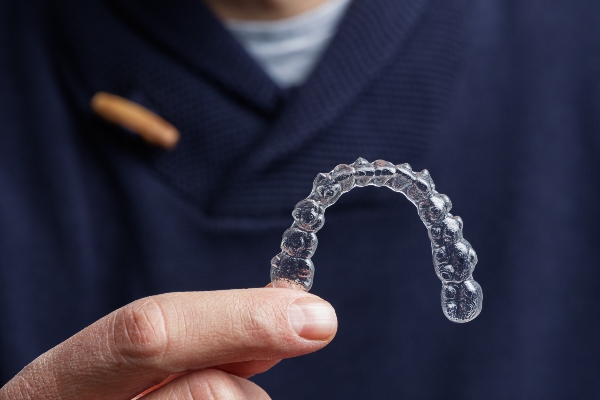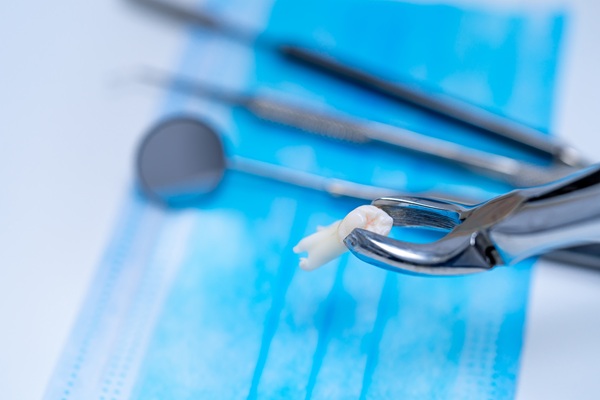Proper Care Tips from an Invisalign® Dentist

Seeing an Invisalign® dentist is a popular way to straighten teeth without using metal braces. Many patients choose this treatment because it is clear, removable, and more comfortable than traditional braces. However, to achieve the best results, it is essential to follow the recommended care steps daily. An Invisalign dentist can guide patients through each part of the Invisalign process.
What is Invisalign?
Invisalign is a system that utilizes clear plastic trays to move teeth into more optimal positions gently. These trays, known as clear aligners, are custom-made for each patient's unique mouth. Every few weeks, a new set of aligners is provided to maintain the teeth's movement as planned. An Invisalign dentist helps patients begin and follow through with their treatment from start to finish.
Wearing aligners the right way
Invisalign aligners must be worn for 20 to 22 hours each day to work properly. This means wearing them while sleeping, at school, or at work. The aligners should only be removed for eating, drinking anything other than water, and brushing and flossing. Skipping hours or forgetting to wear the trays can slow down treatment and affect the final result. An Invisalign dentist will check the smile's progress at every visit and remind patients to wear the aligners as directed.
How to clean the aligners
Cleaning Invisalign aligners helps keep them clear and free from bacteria. A patient needs to rinse the aligners with lukewarm water every time they remove them. Hot water can warp the plastic and ruin the fit. A soft-bristled toothbrush and gentle liquid soap can help with daily cleaning. Patients should avoid using toothpaste, as it can scratch the surface of the aligners. A general dentist may also recommend special cleaning crystals or tablets for a deeper clean.
Eating and drinking with Invisalign
Patients should remove Invisalign aligners before eating or drinking anything except water. Eating with the aligners can cause them to break or stain. Additionally, food can become trapped and lead to tooth decay if the patient does not remove the aligners.
Brushing and flossing during treatment
Since patients remove aligners for meals, food can get stuck between teeth. That is why it is essential to brush and floss after every meal before reinserting the aligners. Brushing twice a day and flossing once a day remains the general rule; however, during Invisalign treatment, extra cleanings will be necessary. Keeping the mouth clean helps prevent tooth decay, gum disease, and bad breath. An Invisalign dentist can demonstrate how to clean teeth effectively during each visit.
Storing aligners safely
Aligners should always be stored in their case when not in use. Leaving them in a napkin, pocket, or backpack can lead to damage or loss. Clean, dry aligners should be placed in the case and kept out of reach from pets or small children. A general dentist will often provide a case and explain how to care for it to keep aligners clean and protected.
What to do if an aligner is lost or damaged
Losing or breaking an aligner can happen, especially during busy or active days. If this happens, contact the Invisalign dentist immediately. In some cases, patients may be instructed to return to the previous aligner or proceed to the next one, depending on the duration of time the current tray has been worn. It is helpful to keep the previous set of aligners as a backup for this reason. Replacing lost or broken trays quickly helps keep the treatment on track.
Seeing the Invisalign dentist during treatment
Regular visits with a general dentist are an important part of Invisalign care. These checkups help make sure the teeth are moving correctly and allow the dentist to catch any problems early. At each visit, new aligners may be provided, or minor adjustments may be made to the treatment plan. Although Invisalign is a straightforward system, it still requires the guidance of a dentist to ensure the results are safe and successful.
Staying patient and committed
Invisalign treatment takes time and effort. Teeth may feel sore when starting a new set of trays, but that means they are adjusting to the new fit. Staying committed to wearing and cleaning the aligners every day will help the patient achieve a successful treatment outcome. The total time for Invisalign treatment is typically 12 to 18 months but may be shorter or longer for some patients.
Healthy habits for a healthy smile
By wearing the aligners every day, cleaning them well, and working with an Invisalign dentist, patients can reach their smile goals. Taking care of Invisalign aligners is simple, but it takes daily effort and support from the dental team. Call today to learn more about Invisalign and if this treatment may be right for you or your child.
Request an appointment here: https://www.dentistryforwoodstock.com or call Dentistry for Woodstock at (770) 238-1437 for an appointment in our Woodstock office.
Check out what others are saying about our dental services on Yelp: Invisalign Dentist in Woodstock, GA.
Recent Posts
A lot of people have begun to consider Invisalign as a method for straightening their teeth. The benefits that come along with Invisalign have grown in success and they can provide a person with straighter teeth through a discreet and simple method.While dentist’s offices have always offered traditional braces as a method of treatment, many…
Clear braces are a popular and effective teeth straightening option for individuals seeking orthodontic treatment without the visible brackets and wires of traditional braces. These braces are known for their discreet design and effective results. Do you have questions about this service? Below are some of the most frequently asked questions about clear braces treatment.Clear…
Clear braces align the smile more discreetly than other methods, such as traditional metal braces. Patients must practice consistent oral hygiene and maintain good oral health to maximize this alignment solution's aesthetic and functional benefits. Fortunately, a general dentist can help patients in both these regards, allowing them to stay on track with their orthodontic…
Are you or your child getting ready to start orthodontic treatment? If so, you may be wondering about different types of braces. Clear braces are an alternative to traditional metal braces.Metal braces are attached to the front or back of teeth. They are made of stainless steel brackets connected with wires. Rubber bands, also known…


